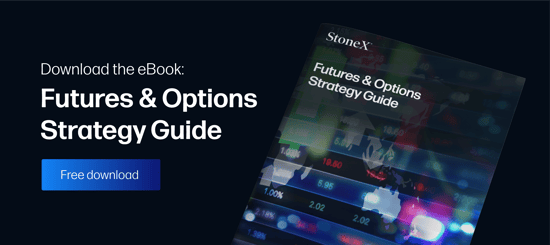A market correlation is a measure, statistical or observational that identifies a positive or negative link between the pricing of multiple assets. These relationships are used to determine the direction and relative strength of evolving price action. Currencies, commodities, debt, and equities include many interrelated markets, featuring distinct correlations between select securities.
Trading correlations is a nuanced subject, featuring a wide variety of methodologies and potential pitfalls. By firmly grasping what a market correlation is, a trader will have a pretty good idea of what to watch out for when applying derived strategies. In short, the best course of action is to almost always keep things simple!
Components of a Market Correlation
Correlated markets move in concert with one another, either in a positive or negative fashion. For instance, if Market A moves up and Market B moves up as well, the correlation is positive. In the event Market A rallies while Market B plunges, the correlation is deemed negative.
Of course, not every fluctuation in price represents a valid relationship. A true market correlation is subject to two primary considerations:
- Quantifiable: A real correlation must not be a product of anecdotal evidence or premature generalizations. Either statistical or detailed observational analysis is required for confirmation.
- Presence of arbitrage traders: Arbitrage trading practices involve taking simultaneous positions in multiple markets in the pursuit of risk-free profits. Correlations are “enforced” by arbitrageurs because this type of trading ensures that prices move in relation to one another and not at random.
When it comes to correlations, it’s important to remember that they’re not concrete. Relationships in asset pricing often change rapidly and are dependent upon time frame and levels of participation, as well as countless other market fundamentals. Regardless, they’re useful in identifying market state and refining trade management parameters.
Applications
One of the most common ways in which traders use market correlations is via a follow the leader methodology. Under this strategy, traders identify markets positively linked and anticipate moves in price according to the action exhibited by the lead market or asset. Positions are then opened and closed in the secondary product with respect to the behavior of the leader.
Any trades are educational examples only. They do not include commissions and fees.
Follow the leader is a popular way to trade correlations, but features several key drawbacks:
- Inconsistency: Correlations are often fleeting, disappearing or reversing without notice. This phenomenon is especially common on intraday timeframes and poses an added risk.
- Rare: Pure correlations on which to base trading decisions are exceedingly rare and hard to find.
- Sophistication: A one-rule approach such as follow the leader is limited in scope, as are most technical trading strategies executed in isolation.
A superior method of integrating correlations into a trading plan is to look for a market that has a lean. For instance, if there’s a positive market correlation present between the DJIA, S&P 500, and NASDAQ, prices will generally be moving in concert with one another. This means that prevailing price action is unlikely to reverse unexpectedly. In this way, the positive correlation between the three equities indices serves as a “safety net” for managing an open position.
Observing correlations from a leaning market perspective has a few key benefits:
- Obvious: Either the bullish or bearish price action is easily visible via chart or trading DOM across the markets in question.
- Useful in trade management: In the event related markets begin to diverge or lose their lean, it provides a clear signal that it may be time to close out any existing positions.
Markets exhibiting a lean are useful because the aggregate bias of traders and investors is obvious. In the event the lean breaks down, the correlation has become questionable, and it’s a good idea to reevaluate the situation.
Insights on Market Correlations
Conventional wisdom tells us the only way to learn how to trade a market correlation properly is through years of experience. The next best thing may be to watch the experts apply the methodology in action.



